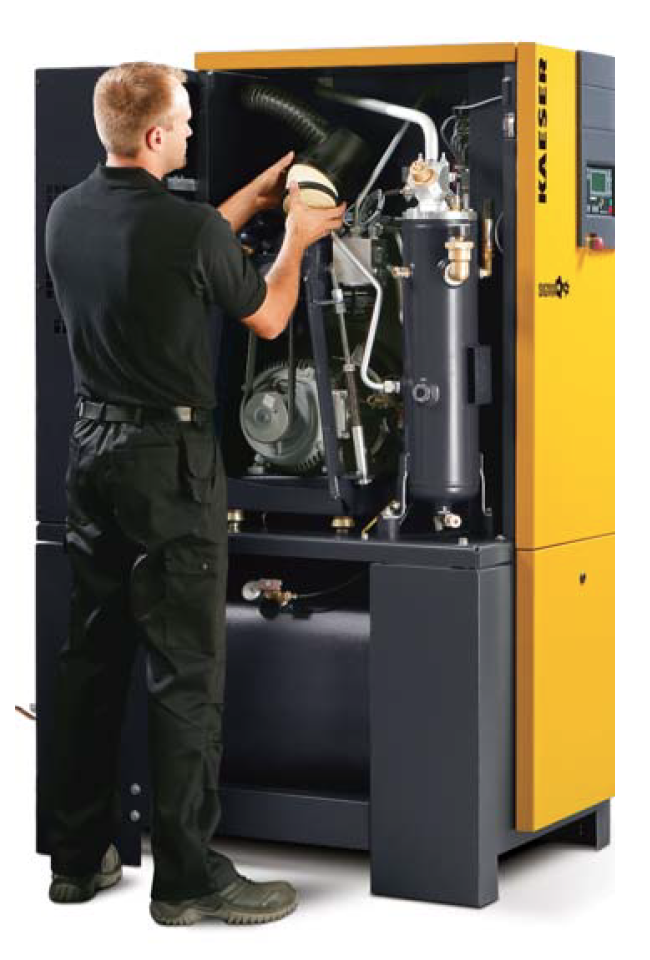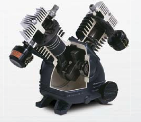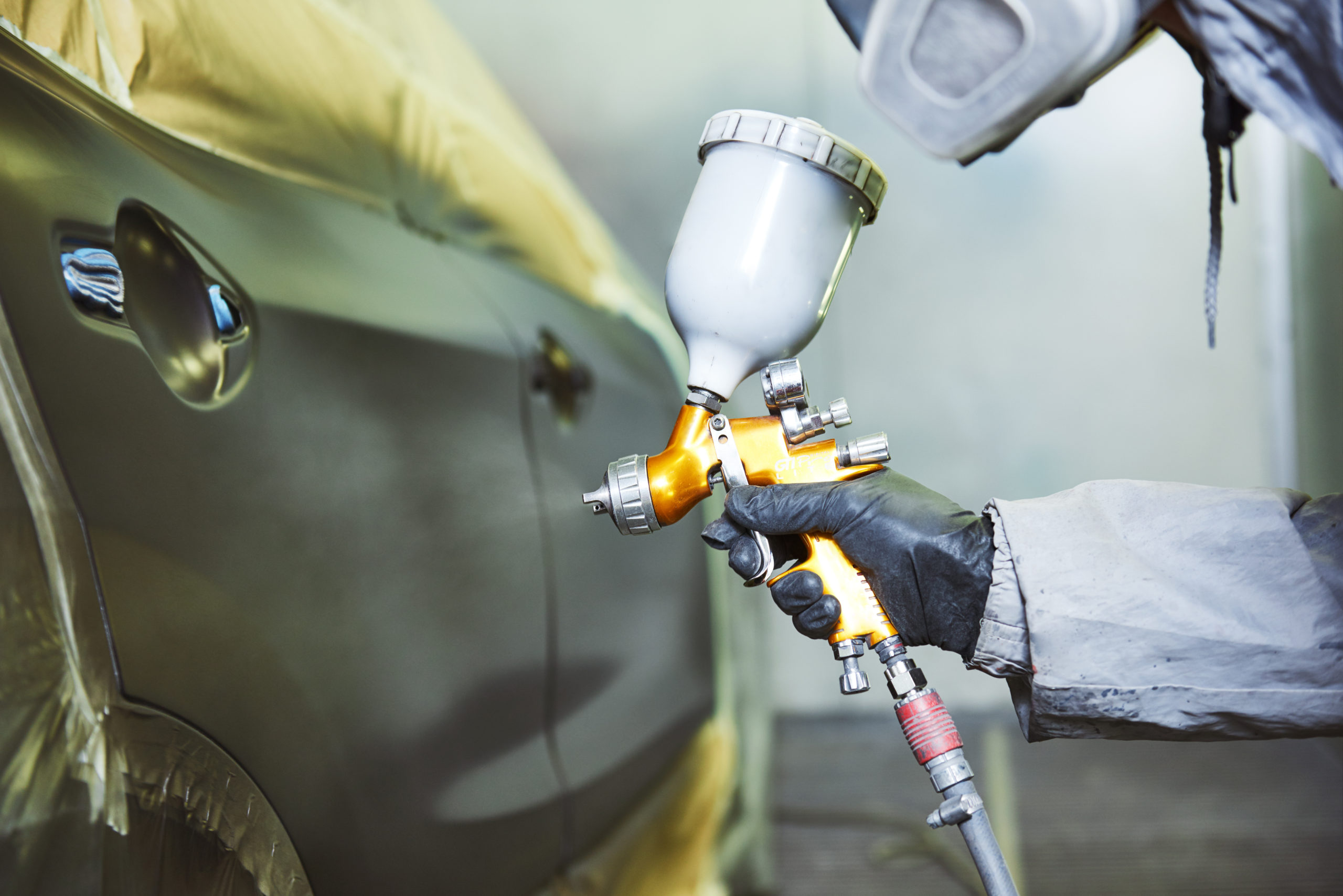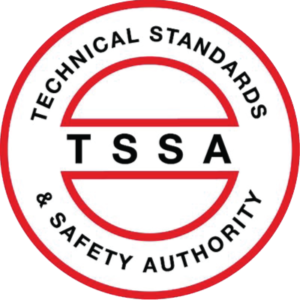A Guide to using compressed air for Collision repair, fleet service, tire service, general maintenance, Racing and Performance.
Consider all the costs in compressed air
The purchase price of a compressor is an important consideration when comparing new equipment costs, bit it is only one of several cost components that affect the overall cost of owning and operating an air system. Low-price options often have higher life cycle costs. Consider these other cost drivers in a compressed air system. In many cases, the benefits in one area outweigh the costs in another and vice versa.
1. Installation
The equipment you select directly impacts installation costs. It is common for buyers to build separate rooms or structures to isolate noisy, vibrating compressors from employees and customers for the sake of comfort. Choices in piping material and sized also impact installation time and labour.
3. Maintenance & Repair
Be sure you understand the preventative maintenance as well as periodic major maintenance requirements of equipment you are comparing. Also, system sizing and installation impact the duty cycle and heat load on the compressor. These factors heavily influence longevity.
2. Energy
Your energy costs depend on the compressor size (hp), how much you run it, and your local utility rates, but even small compressors are often the largest energy user in a shop. Compressor efficiency varies widely between types and brands of compressors, so there are opportunities for significant savings. Likewise, choices in dryers and others system components impact energy usage.
4. Lost Time & Materials
Often overlooked (because they are harder to calculate) are the costs of lost productivity due to downtime, as well as wasted time/materials and reduced tool life due to poor air quality or fluctuating pressure. These may be among the highest costs associated with compressed air, and they can quickly erase the savings gained during the equipment purchase.

Reliability & Performance
Today's automotive facilities have high standards, and with the rising costs of labour, tools, paints, and other materials, re-work is expensive.
Dry, clean, compressed air at a stable system pressure is essential for getting work done with high quality results. Simple maintenance and easy accessibility keep costs low and reduce production downtime. A small footprint and quiet operation increase the options for where to install the equipment.
Kaeser designs rotary compressors with the demanding needs of the automotive services industry in mind. Our packages have a compact design with ultra low sound levels so they can be installed almost anywhere. Our built for a lifetime™ reliability means you won't have to worry about lost profits due to downtime. Complete packages, like the AIRCENTER shown here, include a compressor, refrigerated dryer, tank, and drain for an all-in-one solution that makes installation a snap.
From providing air for rugged impact wrenches to high-end automotive finishes, Kaeser is the compressed air choice for automotive professionals.
Compressor Basics
Deciding between a rotary screw and a piston
When comparing rotary screw compressors to pistons, it's important to keep several things in mind. Rotaries offer 100% duty and higher capacity, so they use less energy and don't need to be oversized to avoid damage. rotary compressors have an oil separator and pass minimal oil, plus they operate at much lower temperatures. These features result in much cleaner, dry air. Finally, rotaries are notably quieter, which often reduces installation costs.
Pressure versus flow
Compressor capacity is best compared using flow (cfm) - not pressure (psig). When users don't have enough pressure at the point of use, usually the problem is not enough flow to maintain the pressure. Adjusting the pressure setting higher won't make more air. Piston compressors are often set to run between 145 and 175 psig, since most shop tools are rated at 90 psig and won't do a better job at higher pressures. The difference is duty cycle. Rotary compressors are thermostatically controlled so they can run whenever needed. Pistons are set to run up to higher pressures, so they can periodically shut off and cool down. Keep in mind that it takes more power to reach higher pressures.
System efficiency
Your compressor may be the biggest energy user in your shop. Your can get a rough idea of your annual compressor energy costs using this formula:
Compressor power(hp x .746 kW/hp) x annual operating hours x $/kWh (electric utility rate)
Note that the nominal hp rating of the compressor is just an approximation, and there is a wide range in efficiency among compressors of a given size. Kaeser models are often much more efficient than other compressors. Even some of our small unit customers have seen significant financial payback from energy savings.


| - | Rotary Screw Compressor | Piston Compressor |
|---|---|---|
| Duty Cycle | 100% | Limited |
| Capacity | 4-4.5 cfm/hp | 3-3.5 cfm/hp |
| Oil Carry-Over | 1-7 ppm | 10 ppm - no upper limit |
| Internal Operating Temperature | 170 degrees F - 200 degrees F | 300 degrees F - 400 degrees F |
| Discharge Temperature | 15 degrees F - 25 degress F above ambient | 100 degrees F and higher above ambient |
| Noise Levels | 65-75 dB(A) | 80+ dB(A) |
Piping Basics
Tips for selecting pipe material
Piping selection directly affects the three key elements of every compressed air system: flow, pressure, and air quality. Poor choices in pipe materials, diameter, and layout cause flow restrictions, often resulting in significant pressure drop. Pressure drop is the main cause of increased energy consumption and underperforming air-driven tools and equipment.
Choices in piping also directly impact installation costs. Heavier materials cause fatigue and slow work, especially in overhead installations. The types of fittings used must also be considered. Some connection types cause pressure drop, need special tools, and take more time to install.
Pipe Material Selection
The chart below offers a quick comparison between common piping materials.
| Material | Advantages | Disadvantages |
|---|---|---|
| PVC | - Lightweight- Inexpensive | - Lower Safety In certain areas - Not compliant with code - Carries static charge - Subject to bursting - Adhesives not compatible with some compressor oils |
| Black Iron | - Moderate Material Costs - Readily Available in multiple sizes | - Labour intensive installation - May rust and leak - Rough inside promotes contaminant build up and creates pressure drop. |
| Galvanized Iron | - Moderate material costs - Readily available in multipe sizes - Some rust protection | - Often only exterior is coated - Labour intensive installation - Rough inside promotes contaminant build up and creates pressure drop - May rust at joints and leak |
| Copper | - No rust, good air quality - Smooth interior, low pressure drop | - Requires quality brazing to prevent leaks - Susceptible to thermal cycling - Installation requires open flame |
| Aluminum | - No rust, good air quality - Lightweight and easy to install - Low pressure drop - Reconfigurable | - Limited pressure ratings - Material costs |

Paint And Compressed Air
The best collision and automotive finishing shops in Ontario choose Kaeser Compressors for compressed air equipment. Our customers don't want to compromise finish quality, or waste time and materials redoing paint jobs. They understand the value of a well designed and reliable compressed air system, and know the benefits of clean, dry air.

